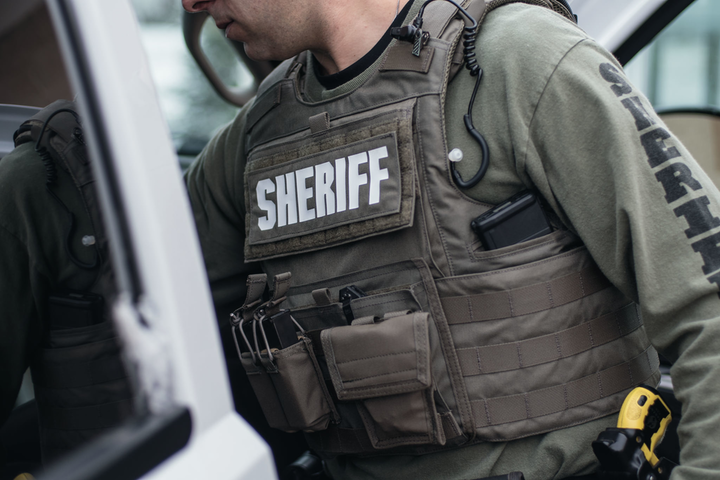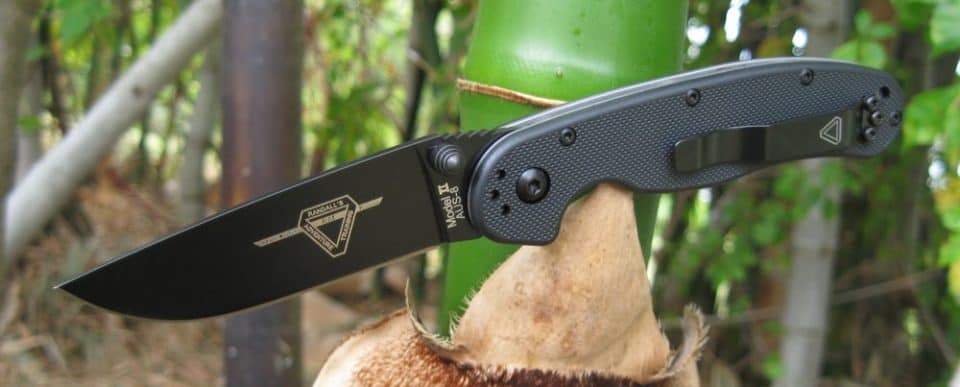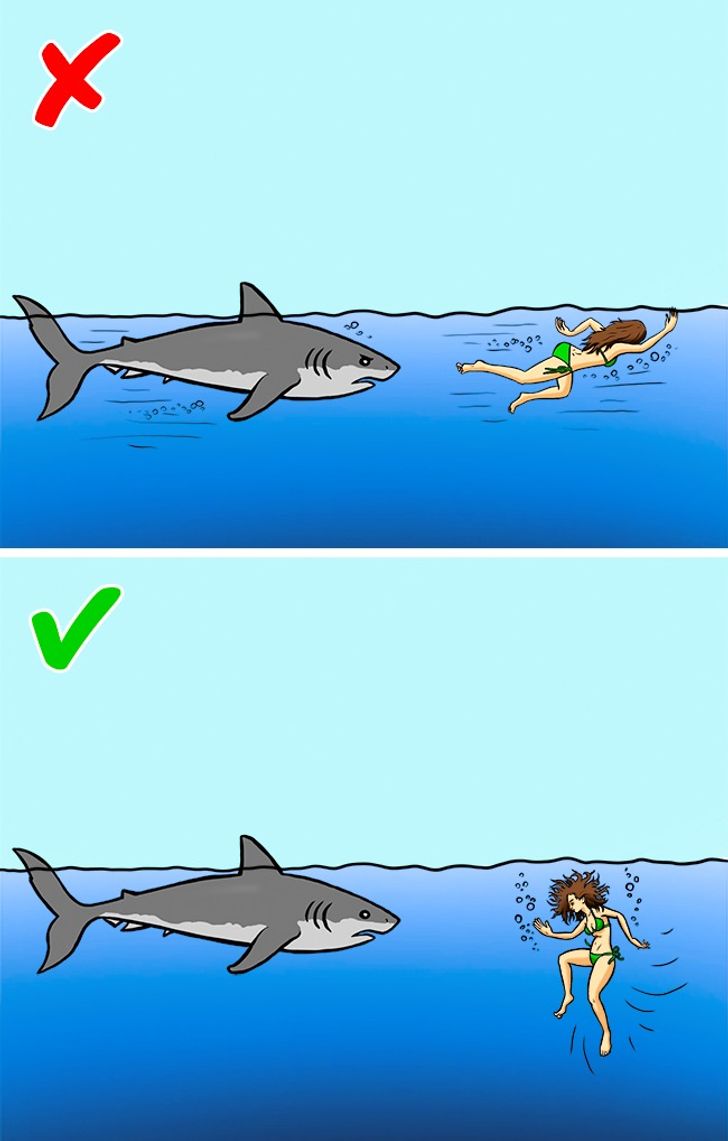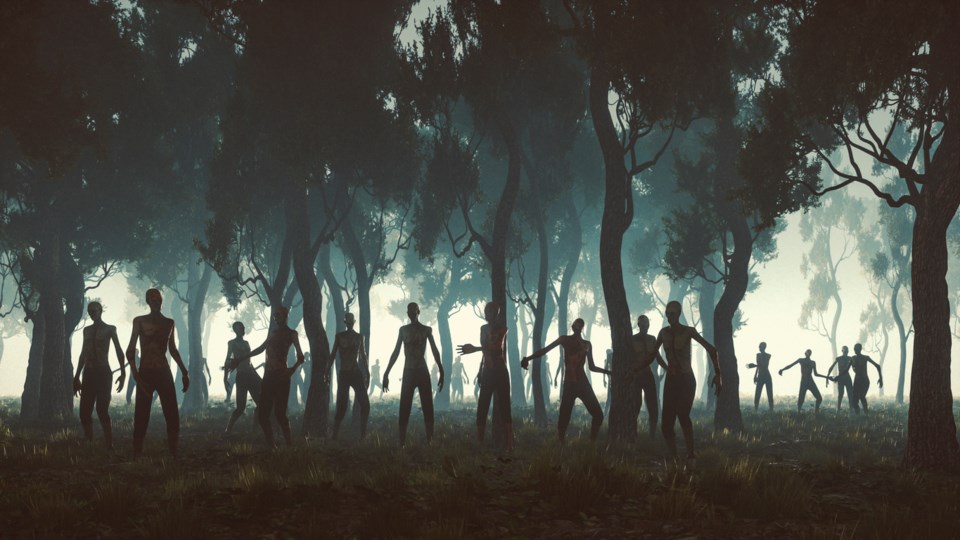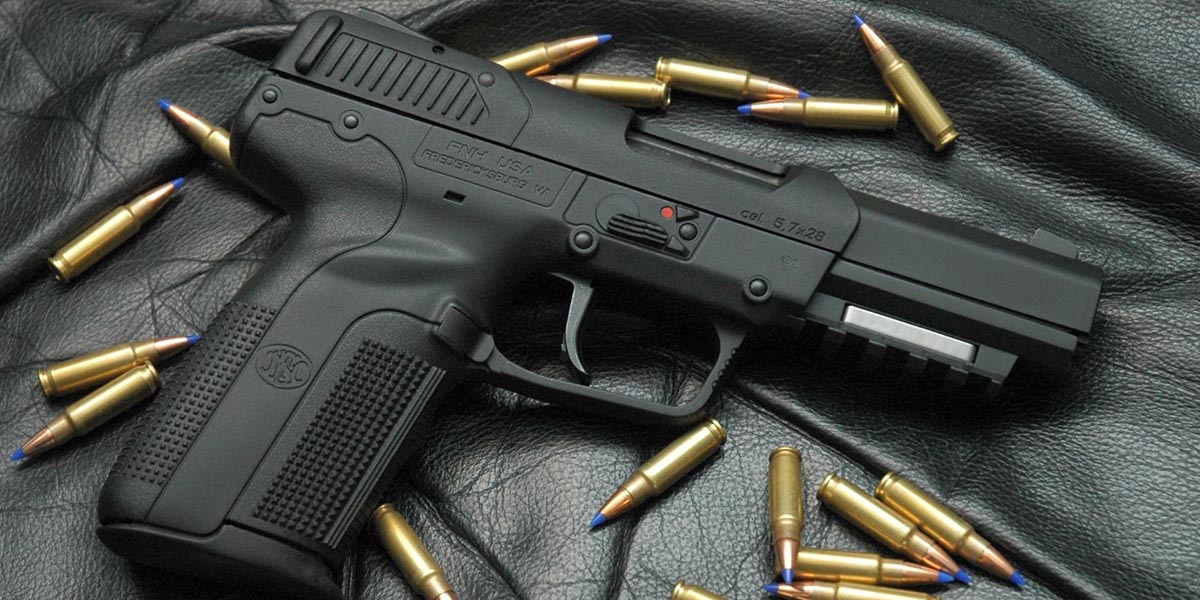Which pistol genuinely stands above all others? And what makes a modern handgun earn a place among the world’s most respected sidearms? In this expanded exploration, the evaluation is based on a combination of real-world performance factors: overall accuracy, reliability in harsh environments, effective operational range, ammunition penetration, magazine capacity, global production numbers, and how widely each model is used across military and law-enforcement forces. A few additional practical traits—such as ease of maintenance, ergonomics, safety systems, and lifetime durability—were also considered when forming this ranking.
This list focuses entirely on modern service pistols. Every firearm included here is currently active, fielded, and in ongoing production. Experimental prototypes or older designs that have fallen out of service are not part of this list.
Currently, the top 10 widely-used modern pistols in the world are the following.
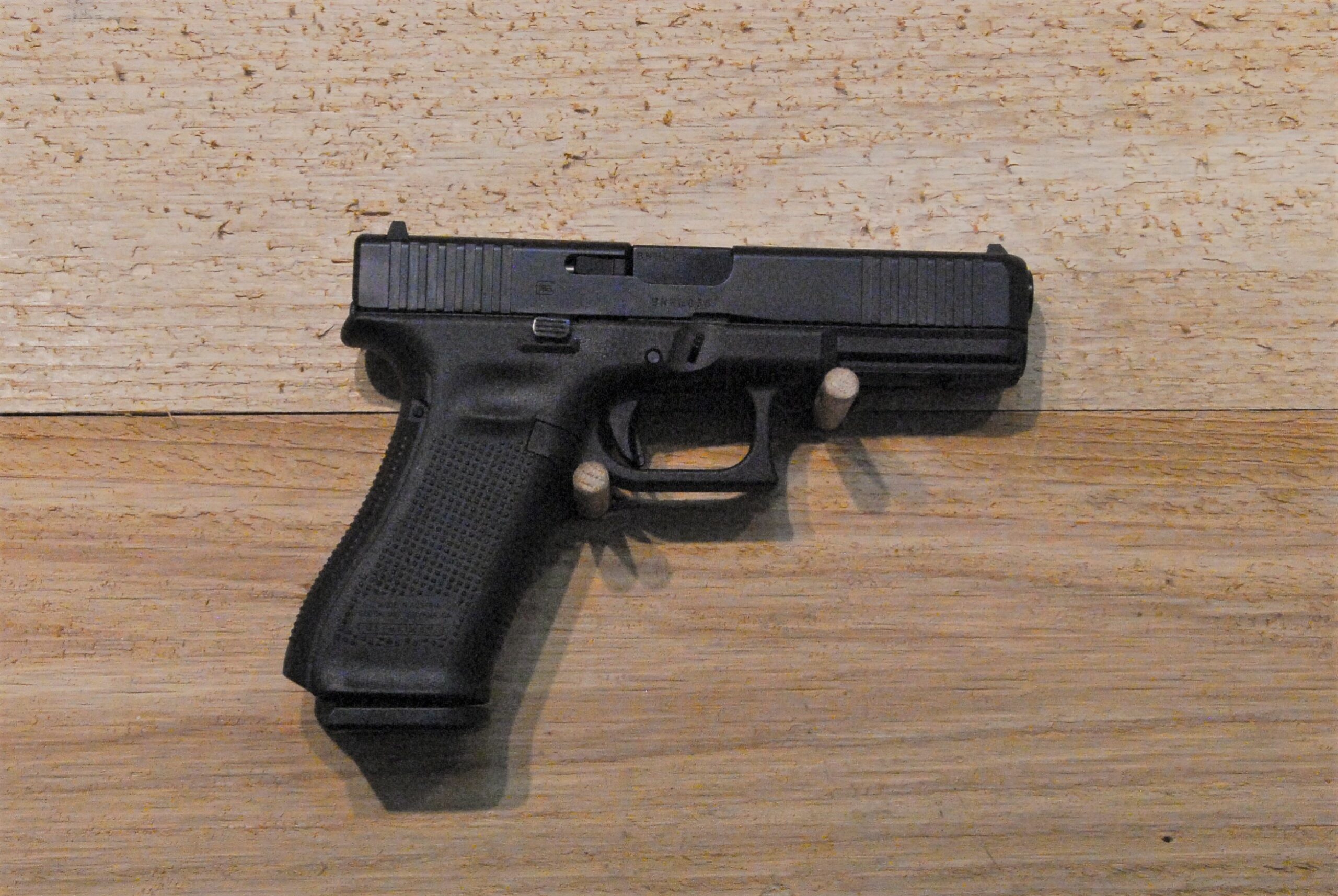
1 – Glock 17 (Austria): A Foundational Shift in Handgun Design
In 1980, the Austrian military issued a call for a modern pistol to replace the aging Walther P-38. Multiple well-established manufacturers entered the competition: Steyr with the GB, Heckler & Koch with the P7M13, SIG Sauer with the P220 and P225, and Beretta with the 92S. Among these respected names, a newcomer—the Glock 17—was initially seen by many as an outsider. Yet, by 1982, it emerged as the chosen sidearm for both the Austrian Army and Police. Full-scale production began in 1986, and within only a few years, the Glock 17 had become one of the most influential pistols ever designed.
This handgun was a clean-slate creation led by Gaston Glock, an engineer with no previous background in firearms manufacturing. Rather than being based on older models, the Glock 17 introduced a simplified, highly efficient design. The immediate advantages—extreme reliability, light weight, and low production cost—pushfully changed global handgun manufacturing. Today, more than 50 countries use the Glock 17, and many police agencies worldwide consider it a gold-standard sidearm. Even its clones, such as the Smith & Wesson Sigma, were heavily inspired by its architecture.
One reason for its rapid rise is the minimalistic engineering: the Glock 17 contains only 33 parts, including the magazine. Field-stripping the pistol can be done in under a minute, and even a small pin or nail is enough to disassemble it. Many components are also interchangeable among various Glock models, making it uniquely convenient for maintenance across large agencies.
Most of the frame and internal housing components are made from high-strength polymer, allowing the pistol to remain lightweight while retaining excellent durability. Only the slide, barrel, and trigger mechanism are metal. The polymer does not warp under extreme temperatures, functioning reliably from –40°C to +200°C, and all exposed metal parts are coated to resist corrosion. These features helped Glock dominate the worldwide shift toward polymer-framed pistols.
Performance-wise, the Glock 17 delivers high muzzle energy for the 9×19 mm round and is known for strong penetration compared to many competing designs. The barrel life is famously high—often cited around 360,000 rounds when properly maintained, far exceeding the roughly 40,000-round lifespan of many other modern pistols.
Its standard 17-round double-stack magazine, also polymer-based, helped define modern handgun capacity expectations. Numerous extended magazines exist, including 19-round and 33-round versions. While the Glock 17 lacks a manual safety lever, it uses the patented Safe Action system, a blend of internal automatic safeties that prevent accidental discharge unless the trigger is deliberately pulled.
Most Glock models come with fixed sights. Only specialized competition variants include adjustable sights for precision shooters.
Since its debut, the Glock 17 has evolved through several generations.
-
The first generation (1986–1990) established the base platform.
-
The second generation (1990–1998) improved ergonomics and introduced additional calibers.
-
The third generation (1998–2010) added an accessory rail and internal updates.
-
Generation four (from 2010) included interchangeable backstraps and a larger magazine release.
Its success inspired an entire family of Glock pistols in multiple calibers and sizes, including compact and subcompact models tailored for civilian carry, police duty, and special operations environments.
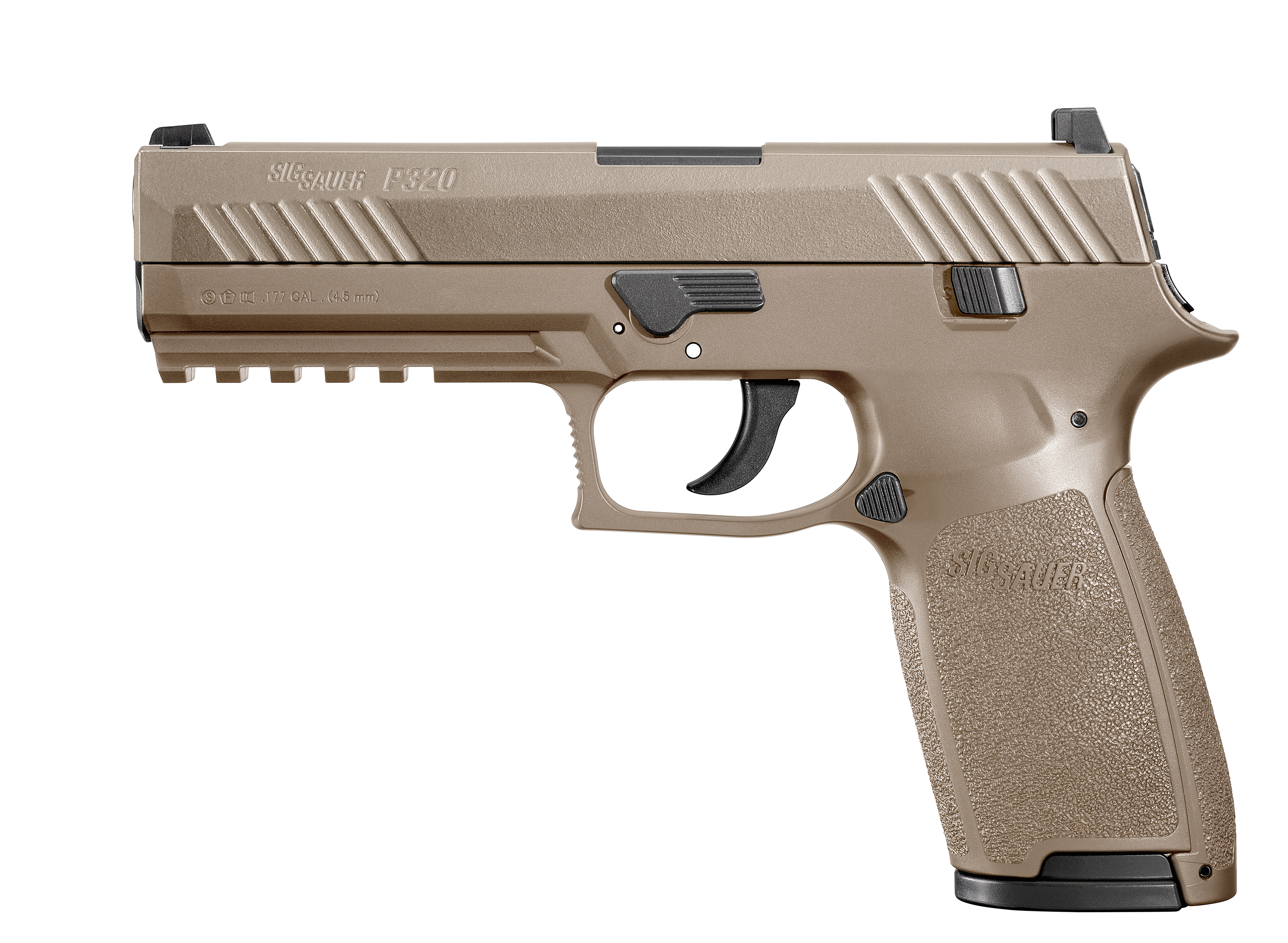
2 – SIG Sauer P320 (Germany / Switzerland): A Modular Next-Generation Sidearm
Introduced in 2014, the SIG Sauer P320 was designed as the successor to the modular P250. SIG intended this pistol to meet the US Army and Air Force’s search for a new service handgun to replace the M9. The P320 eventually won that competition, entering US military service under the designation M17 for the full-size model and M18 for the compact variant.
The P320 was engineered around a concept that was groundbreaking for a mainstream service pistol: a fully modular fire-control group. This internal chassis is legally the serialized “firearm,” meaning it can be moved between different grip frames, slides, and calibers. This allows the same trigger group to become a full-size pistol, compact carry model, or even a subcompact variant with simple part changes.
Caliber conversions are equally flexible. With conversion kits, the P320 can switch between 9×19 mm, .40 S&W, .357 SIG, .380 ACP, and .45 ACP, making it one of the most versatile pistols available today.
Mechanically, the P320 is a striker-fired pistol with a short-recoil, locked-breech system using SIG’s well-known cam-operated barrel design. The slide is stainless steel, while the frame is polymer. Although it lacks interchangeable backstraps, SIG emphasizes that its grip module variations are shaped to fit a wide range of hand sizes.
Optional configurations include a Glock-style trigger safety, as well as a frame-mounted thumb safety for agencies that require manual controls. Magazine capacity varies by caliber:
-
17 rounds for full-size 9×19 mm
-
14 rounds for .40 S&W and .357 SIG
-
10 rounds for .45 ACP
The P320 includes a Picatinny rail for tactical accessories like lights and lasers. It comes standard with 3-dot iron sights, both front and rear drift-adjustable.
A notable advantage is the pistol’s ability to be field-stripped without using tools—a convenient feature for military operators and police agencies who require fast routine maintenance.
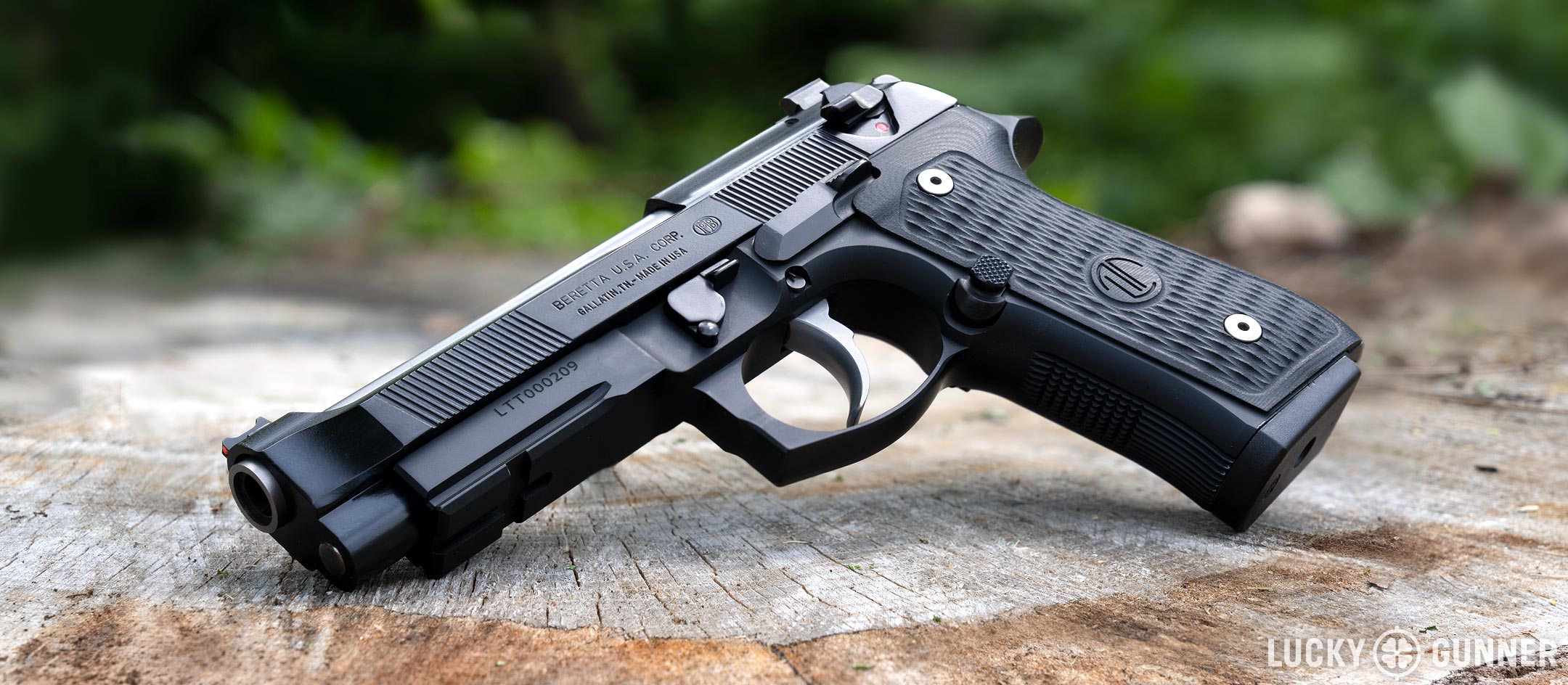
3 – Beretta 92 (Italy): A Classic Still in Widespread Service
Designed in 1972 by Carlo Beretta, Giuseppe Mazzetti, and Vittorio Valle, the Beretta 92 remains one of the most recognizable pistols in the world. Its lineage traces back through earlier Beretta handguns, but it introduced several new features that helped define modern semi-automatic pistols. Full production began in 1976, and by the late 1970s, the model had already been exported internationally. Several countries even began licensed production, while others produced unlicensed copies.
A major milestone came when a variant of the Beretta 92—designated M9—was adopted as the standard sidearm of the entire US military. Despite being an older platform and gradually replaced in some militaries, the 92 series is still fielded by 40 countries and remains popular among civilians.
The Beretta 92 fires the 9×19 mm Parabellum round using a short-recoil system, giving it more power and stability than older Italian blowback pistols. Many shooters appreciate its accuracy, especially at longer distances, and its open-slide design is often praised for reliability.
Its double-action/single-action trigger and manual safety are familiar to many generations of shooters. Light alloys were used in its frame to reduce weight, though early versions occasionally developed slide-fracture issues after several thousand rounds. These reliability concerns were eventually resolved through updated steel treatments and improved internal parts.
One drawback is the pistol’s size—it is relatively bulky and heavy, making concealed carry more challenging. Still, its 15-round double-stack magazine was ahead of its time when introduced.
The weapon features fixed sights and is typically effective out to around 50 meters. Over the years, countless variants have emerged, including internationally produced models like the Brazilian Taurus PT92, Turkish Yavuz 16, Egyptian Helwan 920, French PAMAS G1, and South African Vector Z88.
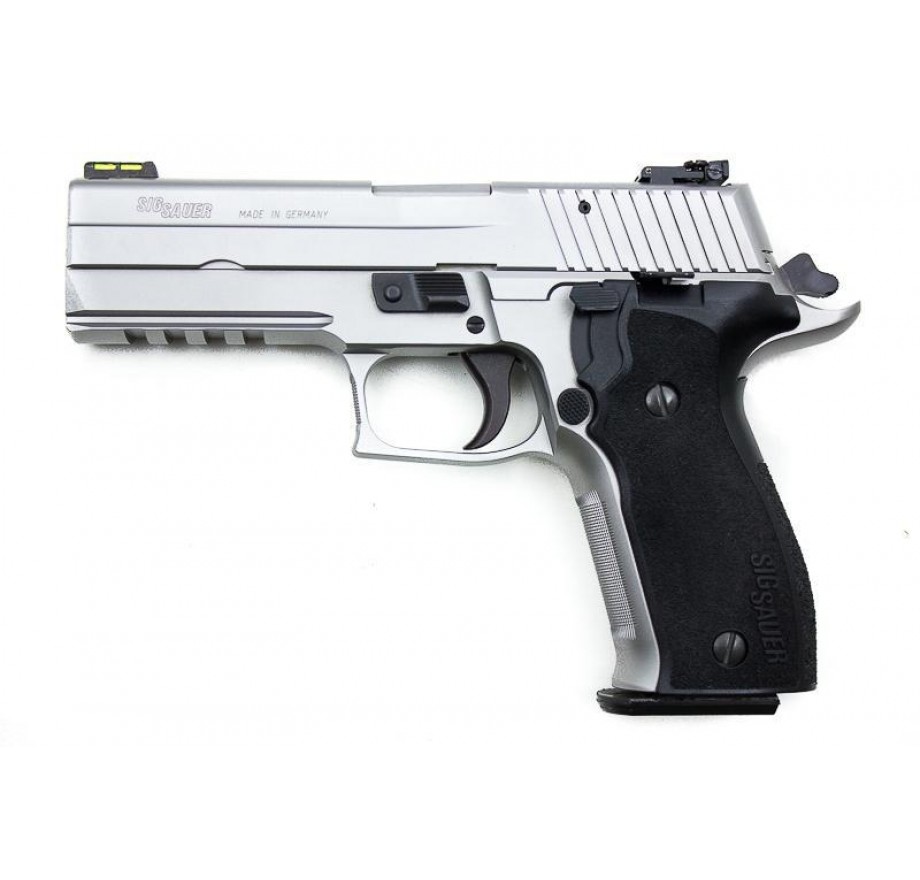
4 – SIG Sauer P226 (Germany / Switzerland): A Proven Professional’s Workhorse
The SIG Sauer P226 grew out of the earlier P220 design, but it was more than a simple upgrade. Developed during the early 1980s, it was created specifically to compete in US military trials for a new sidearm to replace the long-serving Colt M1911 pistols and Smith & Wesson .38 revolvers. Testing ran from 1982 to 1984, and the P226 was one of only two pistols to fully meet the technical requirements. In the end, the Beretta 92FS won primarily on cost, becoming the M9. However, in terms of real-world reputation, the P226 carved out a strong identity of its own.
Even though it did not become the standard US Army pistol, the P226 quickly found a home with specialized units and law enforcement agencies. Over 30 countries adopted it in various roles. In the United States alone, it has been used by the Coast Guard, Federal Air Marshals, FBI units, the Department of Homeland Security, and many police departments. It also became famous as a sidearm of elite units such as the British SAS and the US Navy SEALs, which used it for roughly three decades before later transitions to other SIG models. As of the mid-2010s and beyond, production continues both in Germany and in the United States.
Mechanically, the P226 takes the core layout of the P220 and reshapes it around a higher-capacity double-stack magazine and slightly altered frame geometry. It employs a short-recoil, locked-breech system—solid, predictable, and well-proven in professional use.
Originally, the pistol was chambered in 9×19 mm Parabellum. Later versions introduced .40 S&W and .357 SIG options. In fact, the P226 was the first handgun ever chambered in .357 SIG, a high-velocity 9 mm-class cartridge offering excellent penetration and flat trajectory, especially appreciated by some law enforcement units.
The P226 is available with traditional double-action/single-action (DA/SA) or in a double-action-only (DAO) configuration. It includes a firing pin safety but no manual thumb safety. Instead, it has a decocking lever on the left side of the frame, allowing safe lowering of the hammer without touching the trigger. DAO versions omit the decocker, as the hammer always rests in a lowered position.
Frame materials vary. Standard models use an aluminum alloy frame paired with a steel slide, while some versions employ a stainless steel frame for extra durability and recoil control. A typical 9 mm aluminum-framed P226 weighs around 870 g, whereas stainless-framed versions approach 1,180 g, giving a noticeably heavier but more stable feel in recoil.
Standard 9×19 mm magazines hold 15 rounds, but extended 20-round magazines are commonly available and popular. For .40 S&W and .357 SIG, magazines usually carry 12 rounds. The magazine release button is reversible, allowing easier use by left-handed shooters.
Over time, the P226 earned a reputation as a rugged, reliable, and precise pistol that can endure serious training schedules and harsh field conditions. Its success inspired multiple variants with different finishes, sights, rails, and grips. It was also copied abroad, with Chinese and Iranian models—such as the PC-9 ZOAF—following its general pattern.
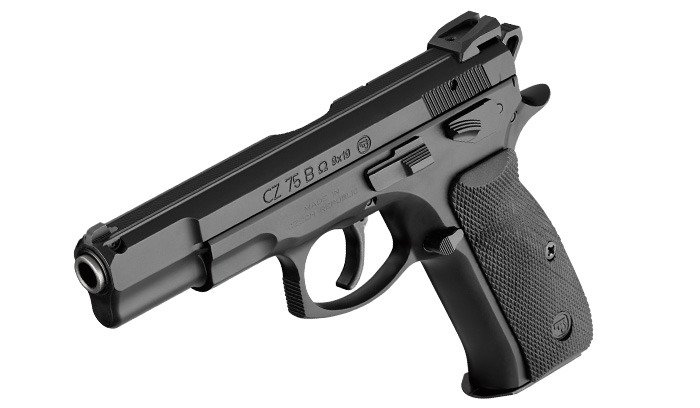
5 – CZ-75 (Czech Republic): A Cult-Favorite European Service Pistol
The CZ-75 was created by brothers Josef and František Koucký at the state-owned Ceska Zbrojovka factory, in what was then Czechoslovakia. From the beginning, it was designed with export in mind—especially toward Western markets—despite being a product of the Eastern Bloc. Production started in 1976, and early output was relatively limited, with around 2,000 pistols produced in the first year. As interest grew, yearly production climbed beyond 20,000 units, yet demand still outpaced supply.
By 2007, more than one million CZ-75 pistols had been manufactured, and production continues today with updated models and numerous derivatives. The pistol is now in service with over 20 countries and is used by militaries, police agencies, and special operations units. Its design has been widely copied and licensed: notable derivatives include the Springfield P9 from the United States, the Chinese NZ-75, the Israeli Jericho 941, the Italian Tanfoglio line, the Swiss ITM AT-88 and Sphinx 2000, and the Turkish Sarsilmaz M2000.
The CZ-75 quickly won fans because it manages to combine reliability, accuracy, and ergonomic comfort in a single package. Many shooters praise its grip shape and balance, which help with natural pointing and recoil control. It is often ranked among the best traditional steel-framed service pistols available.
Standard versions are chambered in 9×19 mm Parabellum, which was the NATO standard. This is an interesting detail considering that Czechoslovakia’s own military and police primarily used Soviet-pattern calibers like 7.62×25 mm and 9×18 mm at the time. The CZ-75, therefore, was aimed outward from the very beginning. Variants chambered in .40 S&W and 9×21 mm IMI also exist, broadening its appeal.
The pistol is all-steel and uses a short-recoil system with a Browning-type locking arrangement. The slide rides inside the frame rails instead of outside them, similar to the Swiss SIG P210. This inverted rail design contributes to smoother cycling and tighter tolerances, which in turn support better practical accuracy.
The original CZ-75 has a double-action trigger with an exposed hammer, but the family includes single-action and double-action-only versions as well. The base design uses a frame-mounted safety lever, and since the late 1980s, CZ-75 variants have been equipped with an internal firing pin safety. Some later models omit the manual safety in favor of a decocker system, depending on the agency or user preference.
Standard double-stack magazines hold 16 rounds of 9×19 mm ammunition, while early models typically carried 15 rounds. In either case, capacity is competitive with other full-size service pistols.
Basic models use fixed iron sights, with the rear sight dovetailed into the slide. Some versions feature adjustable rear sights for target shooting. The effective combat range is about 50 meters, although the pistol is capable of accurate hits beyond that in skilled hands.
All of these traits—solid build, excellent ergonomics, respectable capacity, and consistent accuracy—made the CZ-75 a favorite with both professionals and civilian enthusiasts, and helped it become one of the most copied pistol designs in the world.
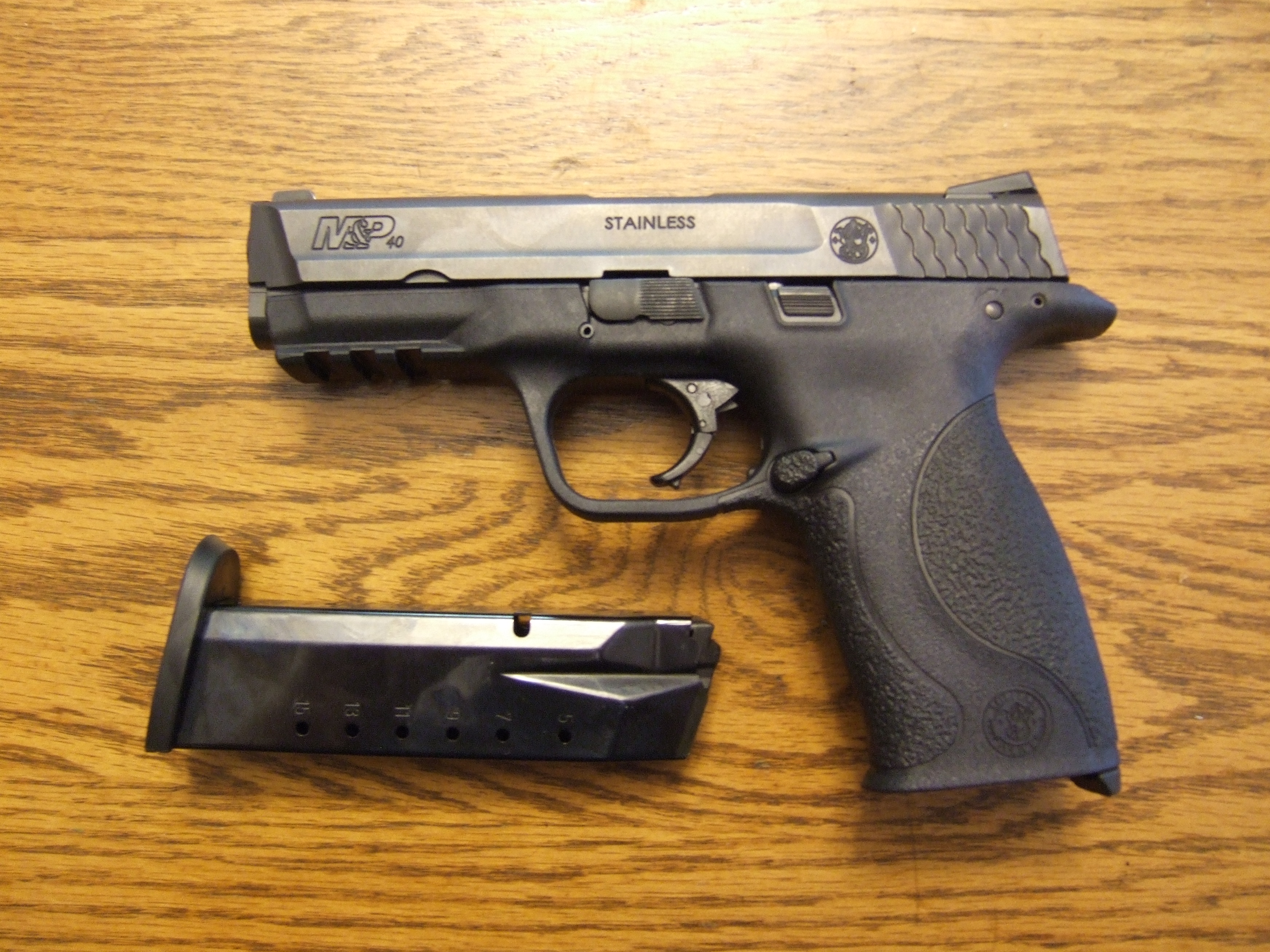
6 – Smith & Wesson Military & Police (USA): A Modern Polymer Duty Pistol
The Smith & Wesson Military & Police (often shortened to M&P) pistol line was introduced in 2005. The name “Military & Police” had a long history within the company, once associated with one of the firm’s most successful revolvers. This time, it was reborn as the branding for a polymer-framed, striker-fired service pistol aimed squarely at the law enforcement and defense market, while also being offered to civilian shooters.
Designed as a new platform rather than a simple update, the M&P does draw conceptual inspiration from the earlier Smith & Wesson Sigma and SW99 pistols, but very few parts are actually shared. The frame is made from polymer, carefully shaped for hand comfort and control, while the slide is built from stainless steel and coated for increased corrosion resistance. Ergonomics were a major design focus, with the grip angle, contouring, and texture developed to feel natural, especially during rapid-fire strings.
The M&P family includes models chambered in .40 S&W, .357 SIG, .45 ACP, and 9×19 mm Parabellum. The .40 S&W versions proved especially popular among police forces, while 9×19 mm models are often favored for military roles and civilian shooters looking for less recoil and cheaper ammunition.
Mechanically, the pistol is a short-recoil, locked-breech design using a Browning-type tilting barrel. It features a double-action-style striker-fired trigger. Ambidextrous controls are standard: slide release levers are located on both sides of the frame, and the magazine release button can be reversed for left-handed users, making the pistol accessible for a wide range of shooters.
In its 9 mm configuration, the full-size M&P typically uses a 17-round magazine, putting it on par with many other modern service pistols. The pistol usually ships with two magazines, which is convenient for duty or self-defense applications.
Sights are dovetailed into the slide at both front and rear, allowing easy replacement or upgrade. Many models come standard with 3-dot sights, and users who require night capability can swap in tritium-equipped sights without difficulty. The effective engagement range is about 50 meters, matching the practical expectations for a duty sidearm.
Under the barrel, an accessory rail allows users to mount tactical flashlights or laser aiming devices. For law enforcement and home-defense use, this rail is often considered essential, as it supports identification and targeting in low-light conditions.
One of the M&P’s big strengths is its modular grip system. Each pistol comes with three interchangeable palm swell backstraps of different sizes and shapes. This lets each shooter adjust the grip to better match their hand, improving comfort, control, and consistency when firing.
Since its introduction, the M&P series has expanded to include compact versions, competition-tuned models, and variants tailored for concealed carry. The line has seen widespread adoption in law enforcement across the United States and in several other countries, reinforcing its place among the leading modern service pistols.
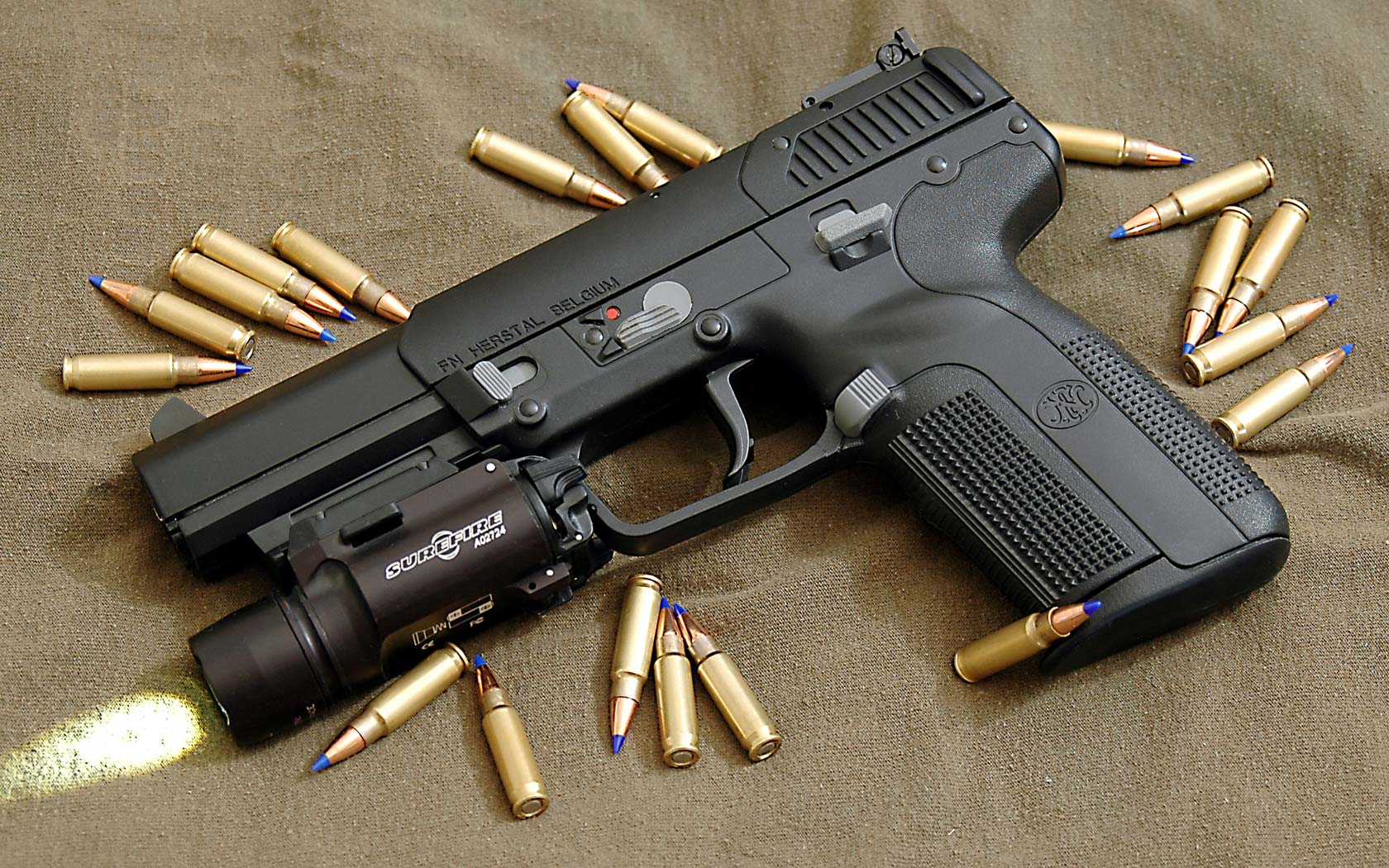
7 – FN Five-seveN (Belgium): A High-Velocity Armor-Piercing Concept
The FN Five-seveN pistol was developed by the Belgian manufacturer Fabrique Nationale (FN) as part of a broader concept alongside the P90 personal defense weapon. Sometimes styled as “Five-seveN” to echo the company initials, the pistol’s name also highlights its unusual 5.7 mm caliber. It was designed to offer a compact sidearm with the ability to defeat modern soft body armor—something conventional pistol rounds often struggle with.
Publicly introduced in the mid-1990s, the Five-seveN was initially restricted to military and law enforcement customers. The Cypriot National Guard was among the first to adopt it around the year 2000, and over time the pistol broadened its user base to include various units in more than 20 countries, including agencies in the United States. A civilian-legal version became available in 2004, expanding its presence among enthusiasts and collectors.
The pistol is chambered for the 5.7×28 mm cartridge, a high-velocity round developed by FN in the late 1980s for the P90. The cartridge is essentially a scaled-down rifle-style round with a pointed projectile. It is larger than typical pistol cartridges but smaller and lighter than assault-rifle ammunition. Compared to 9×19 mm, the 5.7×28 mm round has significantly higher velocity—often roughly twice as fast—resulting in flatter trajectory and enhanced penetration.
With appropriate armor-piercing ammunition, the Five-seveN can penetrate soft body armor, helmets, and even certain types of ballistic glass at close range. FN has promoted its ability to defeat CRISAT-type armor (a combination of Kevlar and titanium) at about 100 meters, and some vests used by soldiers at even greater distances. Various loadings of the cartridge exist, including standard, tracer, and subsonic rounds intended for use with a suppressor.
Aside from the caliber, the pistol’s basic mechanics are relatively conventional. It operates using delayed blowback and has a double-action type trigger. There are also single-action oriented variants. Being a modern design, the pistol makes extensive use of polymer for the frame and some external parts, reducing weight and helping manage recoil.
The Five-seveN features an ambidextrous safety lever positioned above the trigger, where it can be easily reached by the shooter’s index finger or thumb, depending on grip style. Internal firing pin safety mechanisms help prevent accidental discharge if the weapon is dropped. Field-stripping is straightforward, breaking down into four main components for cleaning and inspection.
One of the standout features is magazine capacity. The standard double-stack magazine holds 20 rounds, which, combined with the light recoil of the 5.7×28 mm cartridge, allows for fast, controlled strings of fire. The magazine release can be reversed to favor left- or right-handed shooters.
Sights are typically simple iron units, with a rear sight adjustable in some models and a front blade designed for quick alignment. The effective combat range is significantly greater than that of typical handguns, with practical engagement distances extending out toward 100 meters, particularly when used with appropriate ammunition.
The grip frame accepts interchangeable backstraps, allowing users to customize the pistol’s ergonomics to their hand size. An accessory rail beneath the barrel accommodates tactical flashlights and laser aiming devices. The Five-seveN can also be equipped with a sound suppressor, in which case subsonic loads become particularly relevant to keep overall noise down.
By combining a high-capacity magazine, an extremely fast round, and armor-penetrating capabilities, the Five-seveN occupies a special niche in the modern handgun world—part service pistol, part personal defense weapon companion.
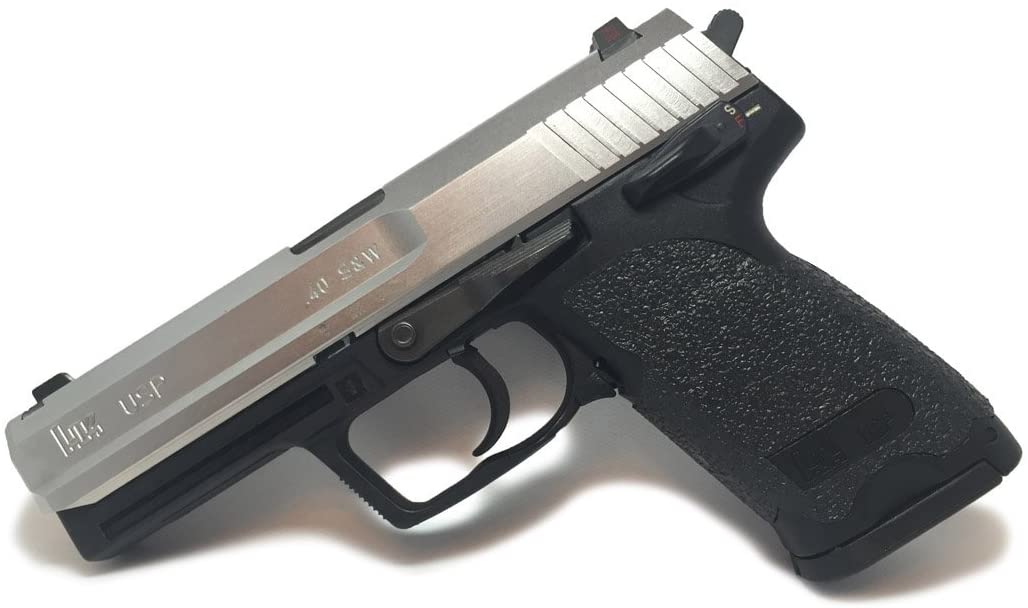
8 – HK USP (Germany): A Robust and Highly Adaptable Service Pistol
The Heckler & Koch USP, short for Universal Selbstlade Pistole (Universal Self-Loading Pistol), began development in 1989 as HK sought to expand into the American civilian handgun market while also creating a versatile platform for police and military use. Drawing inspiration from aspects of the earlier MK23 offensive pistol, the USP was engineered to serve multiple roles, accommodating a variety of calibers and configurations. Production officially began in 1993, and by 1995, a modified version—known as the P8—was adopted by the German military as their standard sidearm. Over time, the USP entered service in nearly 20 countries around the world.
The first USP model introduced was chambered for the .40 S&W cartridge, which at the time was a relatively new round gaining popularity among law enforcement for its balance of stopping power and manageable recoil. Soon after, HK released versions chambered in 9×19 mm Parabellum, .45 ACP, and .357 SIG (the latter available in the USP Compact line).
A defining aspect of the USP is its construction. The polymer frame is reinforced with steel inserts, providing exceptional strength while keeping the pistol lighter than traditional all-metal handguns. The one-piece slide is milled from high-grade steel and treated with a corrosion-resistant finish, making the pistol suitable even for extreme environments, including prolonged exposure to saltwater—something that would severely damage many competing designs.
Mechanically, the USP uses a short-recoil, locked-breech system that incorporates a patented recoil-reduction buffer. This internal mechanism absorbs part of the recoil impulse, reducing stress on components and providing a smoother shooting experience. Many users notice that this system helps maintain faster follow-up shots and extends component lifespan.
Trigger and safety configurations are one of the USP’s strongest features. HK designed nine different modular combinations that vary in the presence or absence of a manual safety, decocking lever, or both. Some models have a safety/decocker lever situated on the left or right side, while others omit manual safeties entirely. Variants include double-action/single-action (DA/SA), double-action only (DAO), or specialized law-enforcement-oriented systems. Every version includes an internal firing pin block safety.
The company demonstrated such confidence in the pistol’s durability that they offered a lifetime warranty for many years. The USP’s service life is commonly cited at around 20,000 rounds, though many users report significantly higher round counts with proper maintenance.
The USP’s standard magazine capacity is 15 rounds for the 9×19 mm model, while other calibers vary. The ambidextrous magazine release, positioned at the trigger guard, allows fast and intuitive reloads without requiring the shooter to shift their grip.
Basic iron sights are dovetailed into the slide for easy adjustment or replacement. The pistol performs reliably at combat distances up to roughly 50 meters, with a maximum effective range near 60 meters in skilled hands.
Beneath the barrel, the USP includes universal mounting grooves for accessories such as tactical flashlights and laser modules. This accessory compatibility, combined with durability and customizable trigger/safety systems, helped secure the USP’s reputation as a tough, dependable pistol suited for both duty and personal defense roles.
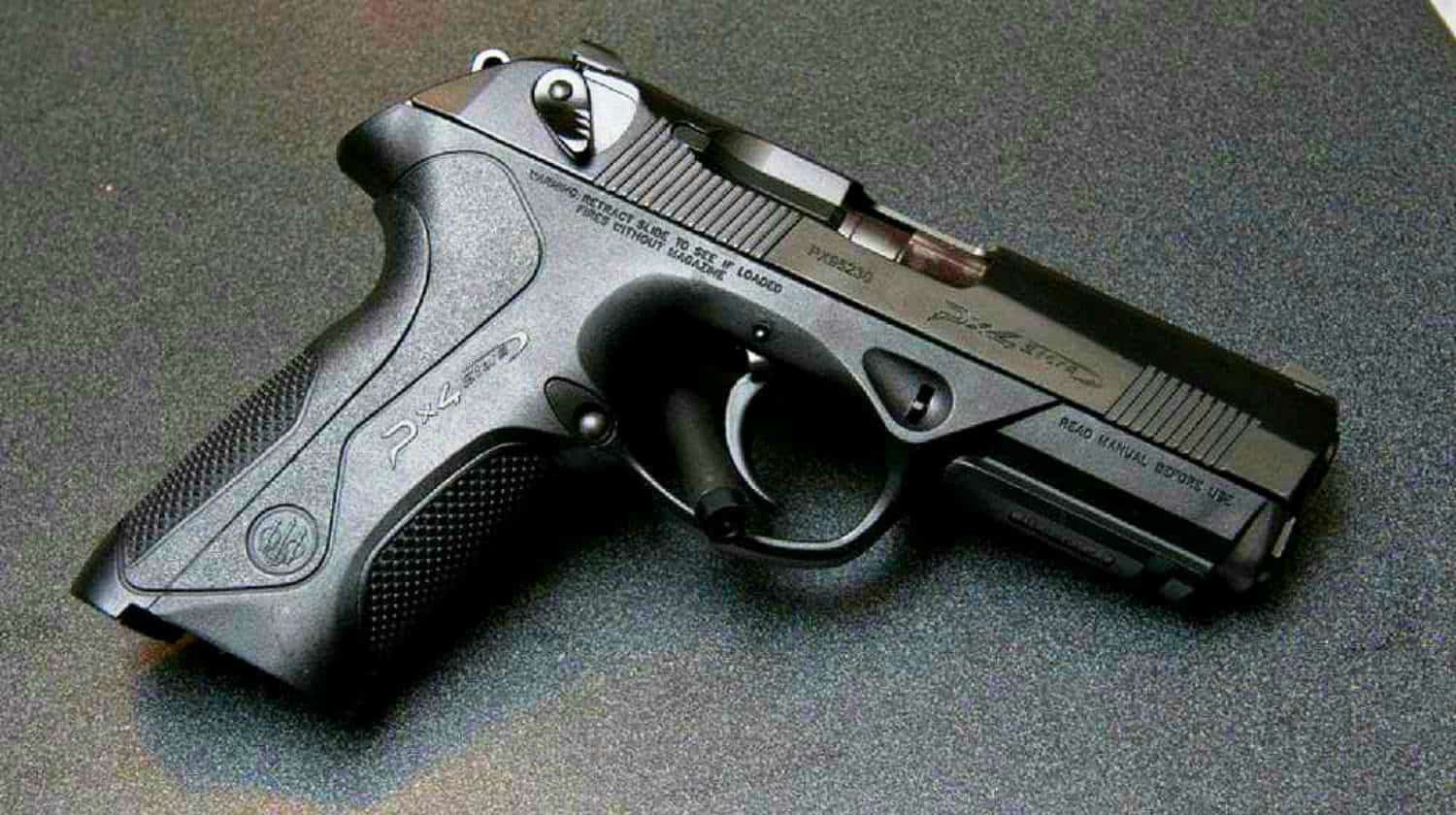
9 – Beretta PX4 Storm (Italy): A Modern Evolution With Rotating-Barrel Technology
The Beretta PX4 Storm represents a fresh chapter in Beretta’s long legacy of handgun development. Built upon concepts first introduced in the Beretta 8000 Cougar, the PX4 is Beretta’s more modern take on the polymer-framed duty pistol. Introduced in 2004, the PX4 was designed to compete directly with contemporary models like the Glock 17, offering updated ergonomics, improved durability, and greater modularity. It quickly found users within at least 11 countries’ law-enforcement agencies, and it also serves within the Venezuelan National Guard.
The PX4 Storm is most commonly chambered in 9×19 mm Parabellum but is also offered in .40 S&W, .45 ACP, and 9×21 mm IMI to meet the needs of international markets. Its frame is composed of advanced polymer materials, which reduce weight and resist corrosion or wear in harsh environments. The slide is made of steel and designed to handle high round counts without deformation.
One of the most distinctive traits of the PX4 Storm is its rotating-barrel locking system. Rather than tilting during recoil (as in most semiautomatic pistols), the PX4’s barrel rotates slightly to unlock from the slide. This rotational movement reduces felt recoil and muzzle rise, giving the shooter quicker recovery between shots and improved overall control. This system, inherited from the Cougar series, sets the PX4 apart mechanically from many of its competitors.
Beretta reports exceptional durability for the PX4. Factory testing demonstrated more than 150,000 rounds fired without critical component failures—an impressive claim and a strong indicator of long-term reliability for professional users.
The PX4 comes in multiple trigger and safety configurations, each designated by a letter:
-
Type C: “Constant Action,” a lighter double-action-only system.
-
Type D: double-action only, without manual safety.
-
Type F: traditional double-action/single-action with manual safety and decocker.
-
Type G: double-action/single-action with decocker only, no manual safety.
Safety levers on the Type D and Type F models are ambidextrous, with versions mirrored on both sides of the slide. All variants include an internal firing pin block.
Magazine capacity for the 9 mm version is 17 rounds, equal to many modern service pistols, including the Glock 17. Beretta also offers extended baseplates that raise capacity to 20 rounds, giving the PX4 an edge for users who prioritize higher ammunition count.
Standard sights include a 3-dot iron arrangement. The effective range is around 50 meters for 9 mm ammunition, with slightly shorter practical range for .40 S&W and .45 ACP due to increased recoil. The pistol performs consistently at duty distances and is capable of excellent precision when properly maintained.
Beretta placed considerable emphasis on ergonomics when shaping the PX4. The grip includes interchangeable backstraps in three sizes, enabling shooters to customize the fit. Many users remark on the pistol’s smooth contours and comfortable hold, which contribute to ease of handling during long training sessions.
An accessory rail beneath the barrel supports tactical lights or laser aiming modules, essential for law enforcement and nighttime use.
Overall, the PX4 Storm blends Beretta’s traditional craftsmanship with modern design principles. Its rotating-barrel system, modular trigger options, durable materials, and customizable grip make it a competitive and well-rounded service pistol.
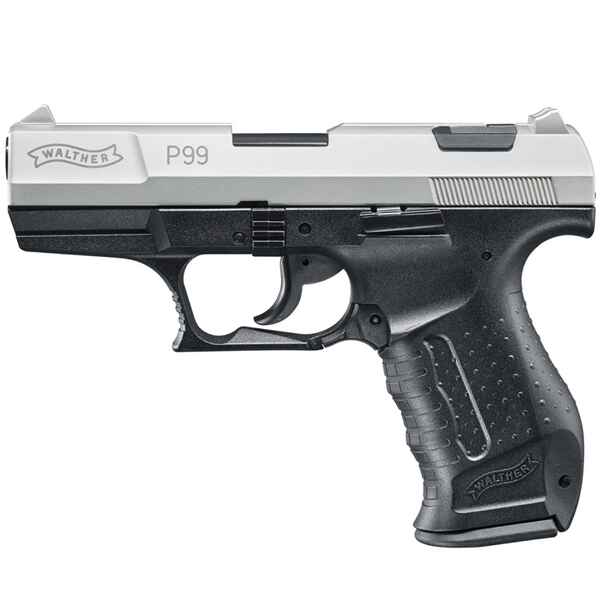
10 – Walther P99 (Germany): A Forward-Thinking Striker-Fired Design
The Walther P99 was conceived during the mid-1990s as a next-generation service pistol aimed at police and civilian markets. Production began in 1997, and over time the P99 found users in more than 10 countries. It has also been license-produced in Poland by the Radom factory and in the United States by Smith & Wesson—although in both cases, the polymer frames were supplied directly from Germany to maintain consistent quality.
The P99 has been adopted by a variety of agencies, including the Finnish armed forces, segments of the Iraqi military, and numerous European law-enforcement units. Its appeal stems from its combination of modern materials, advanced ergonomics, and a distinctive trigger mechanism.
The pistol features a striker-fired system and uses a polymer frame paired with a steel slide. At the time it debuted, the P99 introduced several innovative features that pushed Walther’s lineup forward and anticipated trends that later became industry standards.
Initially chambered in 9×19 mm Parabellum, the model expanded in 1999 to include a .40 S&W version. The weapon operates with short recoil and a locked breech using a modified Browning system. In practice, the P99 gained a reputation for strong reliability and consistent performance during extended shooting sessions.
One of the pistol’s most unusual characteristics is its trigger system. Although striker-fired, the P99 offers multiple firing modes similar to hammer-fired pistols:
-
A traditional double-action mode for the first shot
-
A lighter single-action mode for subsequent shots
-
A “double-action only” (DAO) variant available on its own model
-
The P99QA (“Quick Action”), featuring a partially pre-cocked striker for a consistent pull across every shot
This level of trigger customization is rare among striker-fired handguns and was especially appealing to agencies with specific safety or training requirements.
The pistol includes an automatic firing pin safety, while the DAO version incorporates an alternate trigger-based safety system. A loaded-chamber indicator and a cocked-striker indicator provide visual and tactile feedback on the pistol’s status—useful features for officers who handle firearms in stressful environments.
Another standout element is the decocking button located on the top of the slide. This large, centrally placed button allows the shooter to safely decock the striker—something not typically seen on striker-fired pistols, which usually rely on internal mechanisms rather than external controls. On the P99QA version, this button is much smaller and used only during disassembly. The DAO version eliminates it entirely, as the striker remains uncocked by design.
Controls on the P99 are fully ambidextrous, with the exception of early-generation slide releases, which were left-side only. Magazine capacity depends on caliber and version, ranging from 8 rounds in compact models to 16 rounds in the full-size 9 mm configuration. The .40 S&W full-size version uses 12-round magazines.
The sights are traditional iron units, with the rear sight adjustable for windage and fitted with white inserts for visibility under low-light conditions. The P99’s sight picture and natural pointing characteristics made it attractive to both professionals and civilian shooters.
Three interchangeable backstraps—small, medium, and large—allow the user to shape the grip to their hand size for better control and comfort. The under-barrel accessory rail accommodates tactical lights or laser modules, enhancing its modern utility.
By combining advanced ergonomics, versatile trigger systems, reliable mechanics, and thoughtful safety features, the Walther P99 secured a place among the most innovative service pistols of its era.

